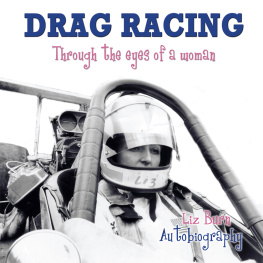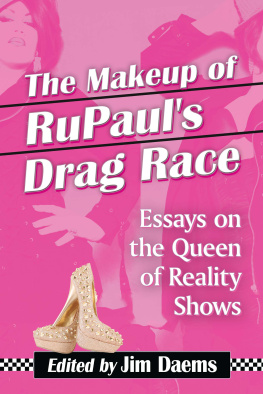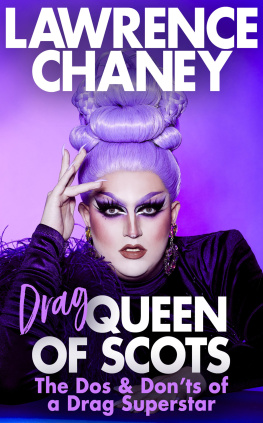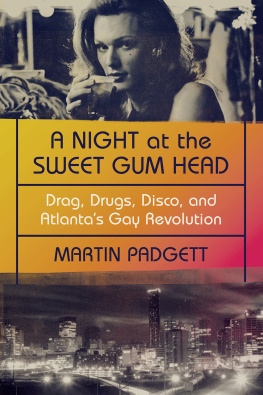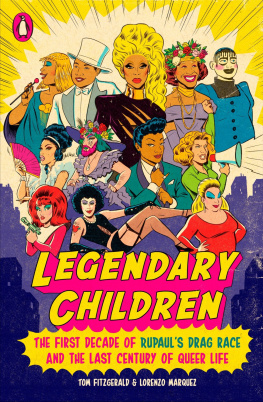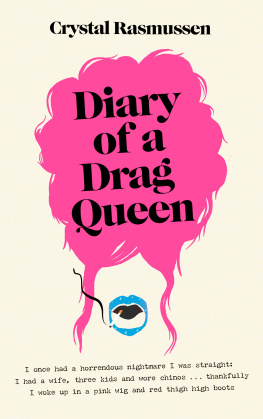Contents
Guide
How You Get Famous
Ten Years of Drag Madness in Brooklyn
Nicole Pasulka

Simon & Schuster
1230 Avenue of the Americas
New York, NY 10020
www.SimonandSchuster.com
Copyright 2022 by Nicole Pasulka
All rights reserved, including the right to reproduce this book or portions thereof in any form whatsoever. For information, address Simon & Schuster Subsidiary Rights Department, 1230 Avenue of the Americas, New York, NY 10020.
First Simon & Schuster hardcover edition June 2022
SIMON & SCHUSTER and colophon are registered trademarks of Simon & Schuster, Inc.
For information about special discounts for bulk purchases, please contact Simon & Schuster Special Sales at 1-866-506-1949 or .
The Simon & Schuster Speakers Bureau can bring authors to your live event. For more information or to book an event, contact the Simon & Schuster Speakers Bureau at 1-866-248-3049 or visit our website at www.simonspeakers.com.
Interior design by Hope Herr-Cardillo
Jacket design by Rex Bonomelli
Jacket photograph by Santiago Felipe
Library of Congress Cataloging-in-Publication Data
Names: Pasulka, Nicole, author.
Title: How you get famous : ten years of drag madness in Brooklyn / Nicole Pasulka.
Identifiers: LCCN 2021055175 (print) | LCCN 2021055176 (ebook) | ISBN 9781982115791 (hardcover) | ISBN 9781982115814 (ebook)
Subjects: LCSH: Drag showsNew York (State)New YorkHistory. | Female impersonators. | Male impersonators. | Brooklyn (New York, N.Y.)History21st century. | BISAC: SOCIAL SCIENCE / Popular Culture | PERFORMING ARTS / Theater / General
Classification: LCC PN1969.D73 P38 2022 (print) | LCC PN1969.D73 (ebook) | DDC 792.702/8dc23/eng/20220103
LC record available at https://lccn.loc.gov/2021055175
LC ebook record available at https://lccn.loc.gov/2021055176
ISBN 978-1-9821-1579-1
ISBN 978-1-9821-1581-4 (ebook)
AUTHORS NOTE
I moved to New York City in August 2001. My life as a young person there was defined by post-9/11 anxiety, accelerating gentrification, and the stubborn refusal of the weirdos and artists around me to accept that the effervescent, hedonistic, grimy good life in the big city was a thing of the past. Over the following twenty years, I came of age mostly in Brooklyn amid queers whod been grade-school children at the peak of the AIDS crisis and, as adults, found themselves able to get married, serve in the military, and be the protagonists on prime-time TV shows. None of this held much sway for those in my crew, but as some people and institutions became a little kinder to lesbians and gay men, we benefited from this growing visibility and acceptance.
In the early aughts, Brooklyns queer scene was robust and exciting, but I rarely, if ever, heard the words drag queen. In 2009, I left the city for a few years and, when I came back, the borough was brimming with joyful performance that proudly called itself drag. RuPauls Drag Race had been gaining popularity, but that didnt fully account for the explosion that happened between 2012 and 2016. While drag has had a presence across the country for as long as there have been gay bars, and is now commonplace even in small towns, the Brooklyn drag takeover came harder and faster than pretty much anywhere else. The local scene was decidedly more messy, freewheeling, and avant-garde than what we watched on TV.
Why did all these barflies, show-offs, artists, and entertainers flock to drag at this moment? At first, I could only speculate based on how I felt watching drag in the city Id called home for more than a decade. The sight of a performer who has embraced all the extremes and excesses of gender in order to transcend it, and who has done so in a cloud of sweat, spit, and makeup, while the music throbs and the crowd screams at the top of their gay lungs, is a reminder that we can be anythingat least for a few minutesand we can be celebrated for it. In these lip sync shows, there was an honesty that only the baldest, most exceptional acts of exaggeration could convey. It was entertaining, but it was also real, and it was thrilling to see people re-create themselves and then lose their minds in a performance. Increasingly, lots of other people around the world understood how fun and infectious it was to watch drag. That, too, was mystifying after decades of seeing stereotypically gay people mocked and dismissed by mainstream culture. What had changed, and what did this broader embrace of drag mean for gay life in general?
As a journalist, its been exhilarating to watch LGBT issues come to the forefront of American culture and politics. Many of these gains were expected and seemed like the natural result of an arduous, decades-long struggle. However, I never could have predicted that, in the second decade of the twenty-first century, loud, proud, unapologetic queerness would be the apotheosis of cool and drag performers would become wealthy and influential far beyond queer culture. Plenty of pariahs become celebrities. When an entire subculture moves from the back room to the main stage, its worth trying to figure out how and why.
Some readers who are already familiar with local drag scenes in the United States may react to a book about Brooklyn drag with an eye roll and acorrectassertion that there are other, equally influential scenes in other, less obsessively chronicled cities. However, few places are home to both the most experimental corners of the drag world and the most professional. Brooklyn drag is at once amateurish and world-class, and in this way it serves as a microcosm of the art form.
Drag, of course, is not one thing, and so I chose to structure this book in a way that allows me to highlight the many perspectives and styles that thrive in Brooklyn. I believe that a narrative told through reportingclosely following the stories of some of the people who have been hustling and innovating over the past ten yearsnot only explains what drag can be and contextualizes the art form for our current moment but also helps readers understand why so many people have fallen in love with this strange, wonderful community. The best stories reveal general truths through detail and specificity, and thats what Ive endeavored to do here.
In a way, Ive been reporting this story ever since I watched my first drag show at Pieces Bar in Manhattan in 2006. But the bulk of my reporting happened from 2018 until the Covid-19 lockdown in March 2020. During that time, I did around a hundred interviews and watched at least five hundred drag performances. Descriptions of drag performances, conversations, and events I couldnt witness myself have been re-created from interviews with participants, videos, and my subjects memories. Whenever possible, these stories have been corroborated with multiple sources.
Its incredible how much drag terminology has crept into contemporary slang. I have frequently quoted people directly and reproduced their word choices in my own narration. There are terms and statements in this book that might offend some readers. I included this language only after considering it with care. The intention was not to be disrespectful or gratuitous but to represent my subjects and their lives faithfully and accurately.
On the subject of language, in the queer communityand, increasingly, the wider worldrecognizing someones gender pronouns and name is a basic form of respect. Because gender play and experimentation are critical to the art of drag, many of the people in this book use different pronouns and names at different times and in different circumstances. A performer might prefer to be called she and her when onstage, but want to be known by their boy name when out of drag. Other performers want to be known by only their drag names and pronouns. Others dont care or change their minds. I believe that any and all gender identities and presentations are valid, and I have worked to respect the individual preferences of the people in this book. I am aware this can sometimes require more care and attention on the part of readers, but one of the joys of telling this story was the way it demanded I embrace ambiguity and look past gender binaries.


